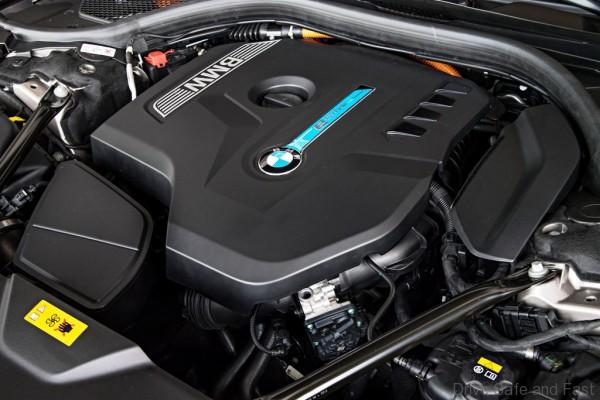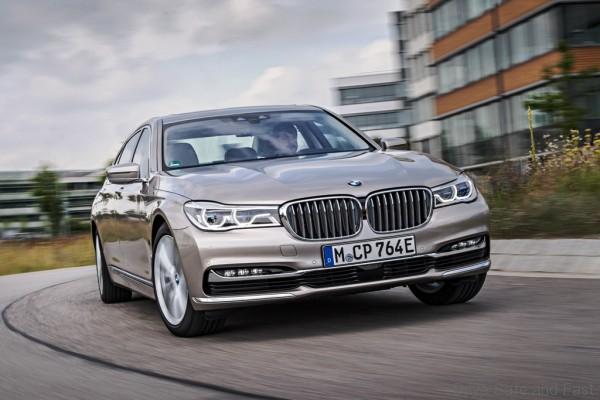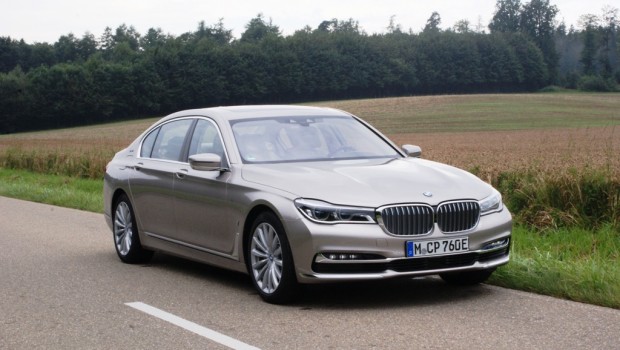BMW 740Le xDrive First Drive Review in Munich
If there is one thing I’ve learned from my visit to Munich for the BMW Group Innovation Days 2016 event, it is how serious the brand is in expanding their effort in plug-in hybrid vehicles. Known as iPerformance, these models take technologies developed for BMW i in much the same way as BMW’s M Performance employ the design and engineering of BMW M models.

In this part of the world, BMW began its electrified offence with the X5 xDrive40e in June 2016, followed by the 330e two months later. Fast forward to April 2017, the third member to go under the iPerformance banner, the 740Le xDrive, joined the local lineup. Sitting on top of the range, the 7 Series PHEV is also available in 740e and 740Le forms in other markets around the globe.

For the untrained eyes, iPerformance cars will look exactly like the brand’s existing non-hybrid offerings, unless they pay attention to the little details, like the charging point flap on the nearside front wing, ‘eDrive’ badges on the C-pillars as well as subtle blue finishes on the grille slats and wheel hubs.

In the cabin, iPerformance models come with ‘eDrive’ designation on the door sills and an eDrive menu in the instrument panel where you can fully exploit the electric drive technology. Other than that, you can expect the same level of luxury as in other 7 Series models, with a host of delightful bells and whistles at your disposal.

Our test car comes with the best equipment available for the 7 Series, and these include Executive Lounge seats, Sky Lounge panoramic glass roof, and high-end Bowers and Wilkins sound system. Rear passengers are given the freedom to control all vehicle functions including rear seat entertainment system using a removable, seven-inch tablet.

Like its non-hybrid sibling, the 740Le measures 5,238 mm in length, 1,902 mm in width and 1,479 mm in height, with a wheelbase of 3,210 mm. The extra room in the rear allows the engineers to position the lithium-ion battery pack underneath the rear seat, thus creating a flat floor in the boot. The space has been reduced to 420 from 515 litres in the 740Li, though that is something we reckon most owners can live with.

As in other iPerformance models, the 740Le is driven by a combination of an internal combustion engine and an electric motor. On the internal combustion front is a 2.0-litre four-cylinder mill that packs 258 hp at 5,000 to 6,000 rpm and 400 Nm of torque at 1,550 to 4,400 rpm. The TwinPower Turbo unit is assisted by a synchronised electric motor with 113 hp and 250 Nm. Together, they produce a total system output of 326 hp and 500 Nm, the highest output for an iPerformance-badged vehicle so far.

On paper, with the help of the xDrive all-wheel drive system and the eight-speed ZF automatic transmission that plays host to the electric motor, the 740Le xDrive completes the century sprint in just 5.3 seconds and goes all the way to 250 km/h. Despite being heavier than the rear-wheel drive 740Le and 740e, the extra traction from the xDrive helps the luxobarge gain speed a little quicker. In electric mode, the 9.2kWh battery provides enough juice for the car to speed up to 140 km/h, for a distance of up to 45 km, depending on how the power is consumed.

A full charge takes approximately four hours using a conventional household 230V charging socket. Otherwise, customers can always opt for an i Wallbox system and save themselves more than an hour of charging time.
The drivetrain is paired with the eDrive system, which has three different electric drive modes that can be selected via an ‘eDrive’ button near the gear selector lever. Starting the car will activate the Auto eDrive mode by default, which means the car will run on hybrid mode using both power sources.

In Max eDrive, the car runs purely on electricity, uses not a single drop of fuel and emits zero pollutants. Provided there is enough charge in the battery, speeding up to 120 km/h is achievable and is done rather briefly. When more power is required, the engine can be switched on at any time through the gear lever or by pressing the accelerator to kickdown.

Meanwhile, the self-explanatory Save Battery mode means the car is driven solely by the combustion engine, while it charges the battery and reserves the energy to be used later.

Striking lines on the body might not be able to hide the fact that the car tips the scale at 2,075 kg, but the brilliant Carbon Core chassis and air suspension fitted on both axles give the car the nimbleness of a lightweight boxer.

Our test unit was equipped with the optional Integral Active Steering, which adjusts the angle of the rear wheels according to vehicle speed, making handling the big sedan even more effortless even when it is being stretched on the winding roads just outside the Bavarian capital. Even then, my driving partner and I barely felt the dreaded side-to-side movement.

Back to the drivetrain, the eDrive technology seems to work wonders in the 7 Series, providing the option of seamlessly piloting the car with either electricity, combustion engine, or both. But it is not the only thing that makes the plug-in hybrid tick, it is the whole package as well as the overall refinement that makes the 740Le xDrive as a worthy leader in BMW’s PHEV lineup.
BMW 740Le xDrive Specifications
Engine: Inline 4 cylinder, twin-scroll turbocharger, electric motor
Capacity: 1,998 cc
Gearbox: 8-speed ZF Automatic
Power: 258 hp @ 5,000 rpm
Torque: 400 Nm @ 1,550 rpm
Total system output: 326 hp/500 Nm
Top speed: 250 km/h
0-100 km/h: 5.3 seconds

















